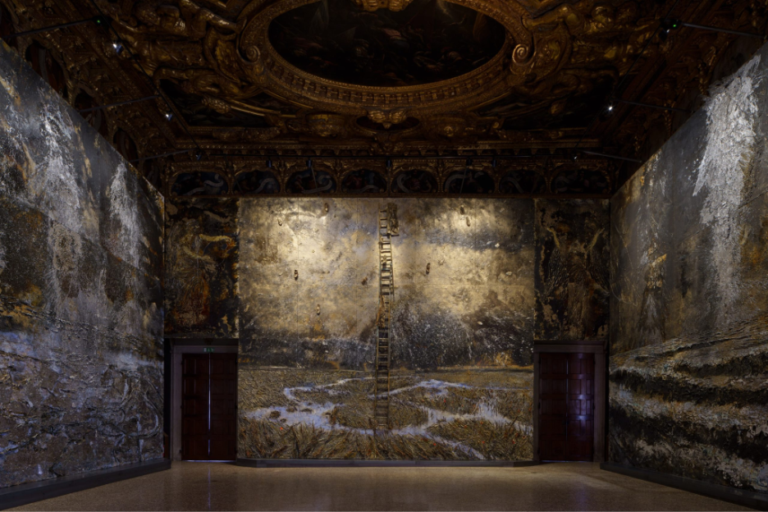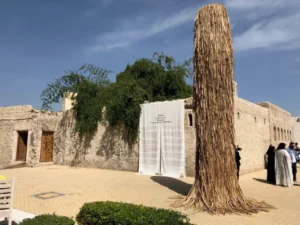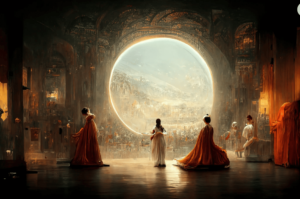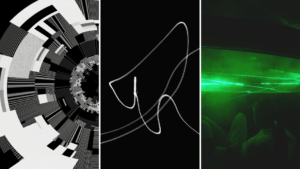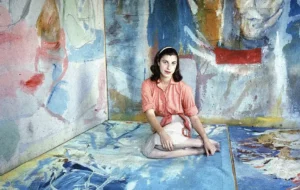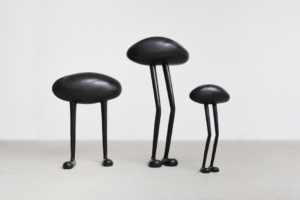“Art cannot live on itself. It has to draw on a broader knowledge. It needs to bear the scars of the world, the wounds of life.” – Anselm Keifer
Running from March 7 to June 9, 2025, at the prestigious Van Gogh Museum and the Stedelijk Museum in Amsterdam, “Where Have All the Flowers Gone” (Sag mir wo die Blumen sind) is an ambitious two-venue exhibition that brings together the profound works of a German artist Anselm Kiefer, offering audiences a comprehensive view of his extensive artistic evolution – one that has lasted over four decades and counting.
Anselm Kiefer, renowned for his deeply textured, large-scale works that merge painting and sculpture, often incorporates unconventional materials such as straw, lead, ash, and clay. His art, characterized by its somber palette, intricate layering, and symbolic imagery, draws from German history, mythology, and literature – providing visually and emotionally layered narratives that invite contemplation and dialogue about the complexities of memory, identity, and human experience. With a Neo-Expressionism approach, Kiefer emphasizes emotional intensity and explores themes of memory, trauma, and regeneration. His monumental-scale works confront dark historical scenes and existential concerns, creating powerful, evocative visuals.
This important exhibition marks the first collaborative project between the Van Gogh Museum and the Stedelijk Museum. At the Van Gogh Museum, visitors will encounter a rare juxtaposition of Kiefer’s drawings, created during his teenage years as he retraced Van Gogh’s footsteps from the Netherlands to Belgium and France – celebrating Kiefer’s longstanding admiration for Van Gogh. Notably, the exhibition features The Starry Night (2019), a never-before-exhibited piece that reimagines Van Gogh’s iconic nightscape using a blend of acrylic, straw, gold leaf, and wood, showcasing Kiefer’s signature material experimentation.
Conversely, the Stedelijk Museum presents an unparalleled retrospective of Kiefer’s legacy. Key highlights from the Stedelijk Museum include Innenraum (Interior) (1981), which portrays the mosaic room of the demolished New Reich Chancellery in Berlin as a decaying, desolate space. The centerpiece, a sprawling 24-meter-long installation that utilizes materials such as clay, dried rose petals, gold, costumes, and World War II uniforms, will envelope the museum’s historic staircase.
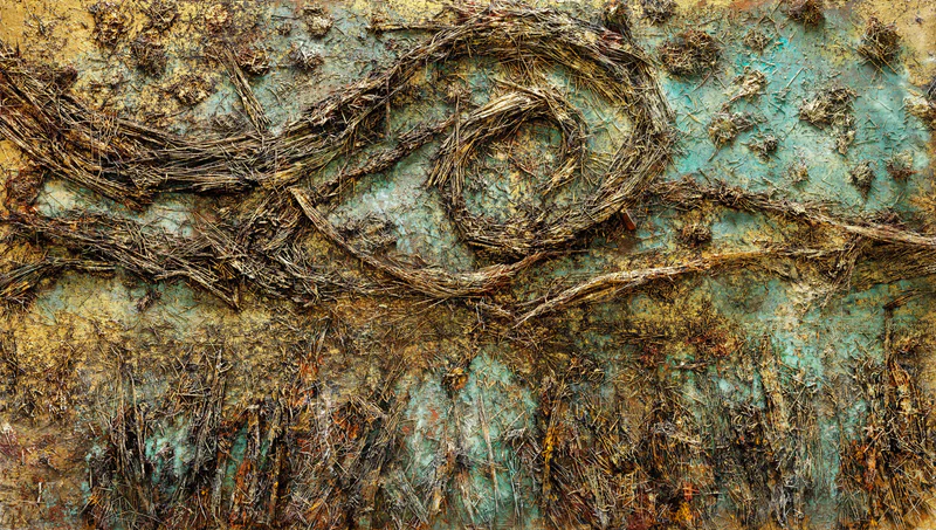
The Visionary Behind the Masterpieces
Born in 1945 in Donaueschinger, Germany, Anselm Kiefer emerged in the post-war art scene, a period marked by Germany’s grappling with its recent past and identity. Initially, Kiefer pursued studies in literature and philosophy at the University of Munich, fields that would later greatly influence his art’s thematic complexities and narrative structures.
Transitioning to art in the mid-1960s, Kiefer enrolled at the Kunstakademie Düsseldorf. It was under the mentorship of Joseph Beuys that Kiefer began to cultivate his distinctive style. In his early days, Kiefer’s works were characterized by a raw exploration of Germany’s tumultuous history, particularly its Nazi legacy. Rejecting the prevailing Minimalist and Abstract Expressionist movements, Kiefer embraced a more figurative and textured approach, laying the groundwork for what would become his signature language of heavy materials and metaphorical visuals.
Throughout his life, Keifer has openly struggled with depression, experiences that have infused his work with palpable emotional intensity and a vulnerability that has enriched its relatability. The somber tones and weighted materials he employs are not merely aesthetic choices but reflections of his internal battles and a broader commentary on the human condition.
Fluent in several languages, including German, French, and English, Kiefer’s ability to engage with a diverse range of literary and philosophical texts has enriched his artistic vocabulary. This multilingualism has enabled him to create works that are both universally relevant yet profoundly personal. Another significant layer of Kiefer and his work is his environmental consciousness. In response to the growing global awareness of ecological issues, he has increasingly incorporated themes of environmental degradation and the consequences of human intervention into his art. His use of natural and repurposed materials demonstrates his commitment to sustainability and reflects his concerns about the planet’s future.
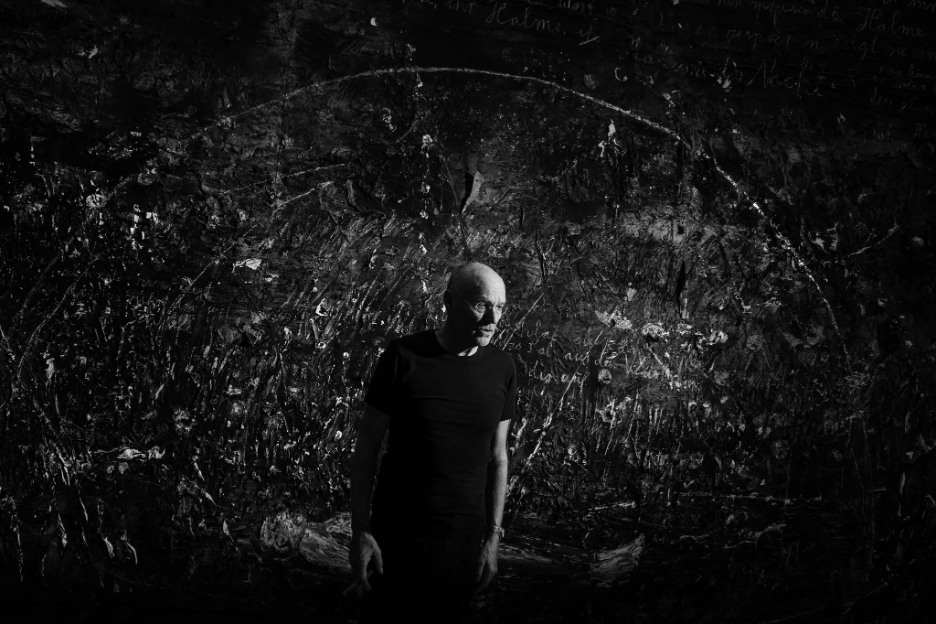
Conceptual Depth and the Transformative Power of Materials
Kiefer’s art demonstrates a meticulous layering technique and imbues his works with a palpable sense of depth and history. Employing a diverse array of materials such as lead, concrete, straw, dried plants, glass, and barbed wire, he deliberately chooses materials not only for their aesthetic quality but also for their symbolic resonance. Kiefer has often described lead, in particular, as “the only material heavy enough to carry the weight of human history.” This choice emphasizes his thematic preoccupations with memory, loss, and the burden of the past. Meanwhile, the use of materials like clay, straws, and dried flowers adds a tactile dimension that evokes the fragility and resilience of the human experience.
The monumental themes of Kiefer’s work are further emphasized by his large-scale installations. He has created immersive environments that invite viewers to engage physically and emotionally with the narratives he constructs.
In one of his early masterpieces Margarethe (1981), in which he uses straw and other organic materials. This piece is the culmination of a series based on a poem by Romanian poet Paul Celan, “Death Fugue,” which recounts his time in a Nazi concentration camp. With Sulamith (1983), Kiefer confronts the atrocities of the Holocaust through “The Berlin Hall of Soldiers” by Wilhelm Kreis, a memorial to Nazi soldiers who persecuted the Jews. He transforms the building’s walls into an oven, evoking the oppressors’ brutal mass cremations, shifting focus from glorification to empathy for the oppressed.
To depict themes of transformation in Nigredo (1984), Kiefer uses dark, textured canvas of expansive landscape enriched with emulsion and shellac; its somber palette evokes a historical devastation of German soil. In the early 2000s, Keifer created The Seven Heavenly Palaces (2004), a powerful visual metaphor in the form of a monumental installation consisting of seven towers, made from reinforced concrete with lead books inserted in each tower.
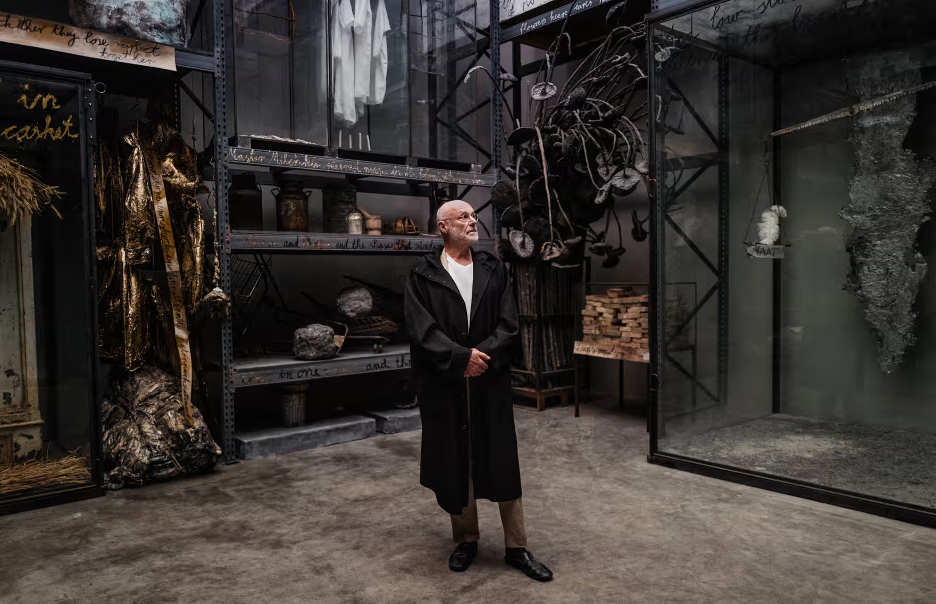
Legacy and Influence: Shaping Contemporary Art
Kiefer’s innovative use of materials and thematic boldness is shaping the contemporary art landscape – paving the way for artists to explore complex narratives and truths through material experimentation. Before gaining global recognition, he spent considerable time as an educator, inspiring a generation of young artists with his avant-garde techniques and philosophical insights. Kiefer’s commitment to interdisciplinary collaboration has him frequently engaging with artists from different mediums, including poets, musicians, and filmmakers, creating works that exist at the intersection of various artistic disciplines.
Following the “Where Have All the Flowers Gone” exhibition, the Saint Louis Art Museum will present a major exhibition of Kiefer’s work slated to open in late October or early November 2025 and will continue through January 2026. Titled “Anselm Kiefer: Becoming the Ocean,” this will be the first extensive survey of Kiefer’s work in the United States in over two decades, showcasing pieces from the 1960s to the present. Spanning approximately 30,000 square feet. This exhibition will be Saint Louis Art Museum’s largest in several decades and will offer free admission to all visitors.

